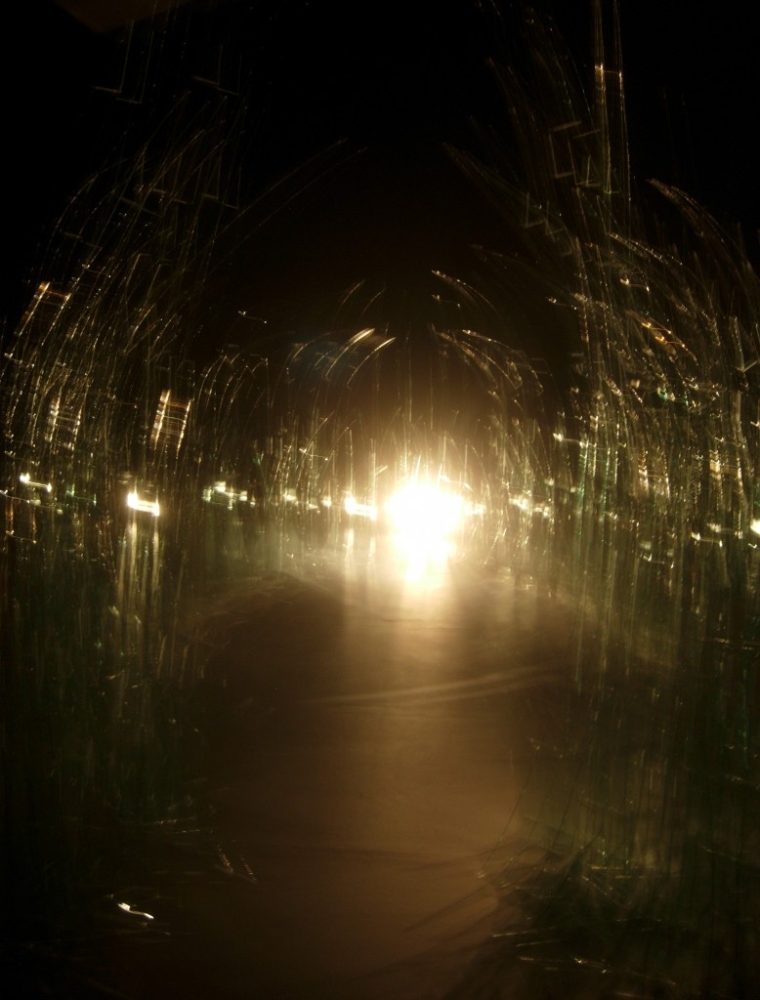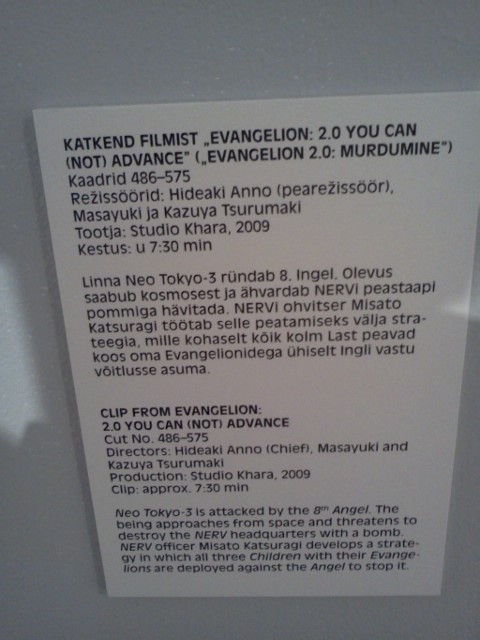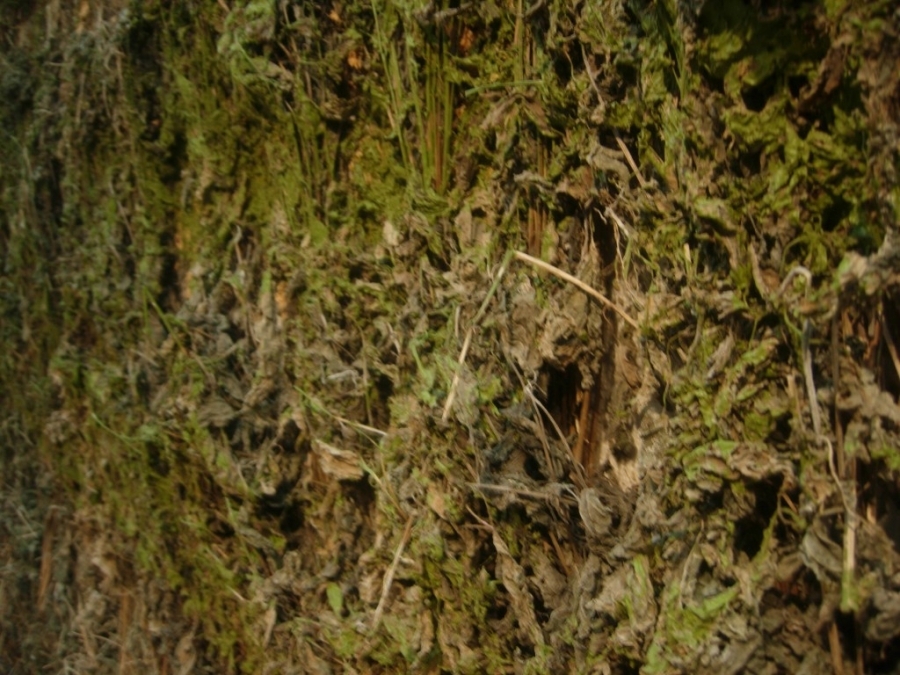Covering Japanese animation, German clash art-design, and Estonian seminal solo, the contents of Kumu’s early-April offerings all exhibit symptoms of curatorial distress. Taken as one drawn out experience, as with any such institutional gluttony, the gallery goer comes away similarly infected. A case of cognitive dissonance, not neccesarily negative, but dissonant whatever.
Raoul Kurvitz’ career retrospective, of the three exhibits, is most successful as a whole, but with a sense that no matter the visitor’s efforts this comes at the expense of the individual pieces. With Kurvitz’ works covering the range of performance, installations, video, and material murals, it is no mean feat to create a cohesive experience of their mass ingestion. Yet with such range the quality of any individual piece is elusive, sucked up by the funfair atmosphere of the multi-dimensional walk-through.
Reconstructed environment Maelstrom, a spiralling tunnel of glass bottles, is transformed into bit-part corridor, rather first-hand experience of 1990’s first-person shoot-em-up texture showcase than self-sustained ecosystem. Spat out the tunnel backside, the techno-throwback becomes deliberate, as 21 once advanced Pentium class workhorses chug out Kurvitz’ play on colour theory Pentatonic Colour System II—its carefree/careless energy exhaustion an odd counterpoint to the monumental naturism of the great nettle wall from Youth and Middle Age of the East European Plain that awaits entrance. Secreted off the main path Palace (this time the glass comes in shards) gains sense through contrast as much as character—physical shape and removed space combining in a moment of hidden, shamed but still precious faith. Video works fair best on solo merits (it should be said, most everything included is engaging) but even double-team plays of absurdist banking farce reduce to walk-on parts in the whizz-bang whole.

Raoul Kurvitz, Palace
Imaginary Spaces and Urban Visions. Highlights of Japanese Animation, is a more straightforward prospect. Homogeneity of materials and media apparently forestall any need for curatorial tour-de-force. And as promised, presentation of working design, isolated frames and reference material, abstracted from animated product, creates ample space for appreciation of the craft and sheer effort integral to the genre. In the broader institutional context ground-breaking genre moments Ghost in the shell and Patlabor prove easy fits, but it is genre-typical Neon Genesis: Evangelion that adds the metaphysical dissonance—a text summary of the sample cut raising greater existential discord than any violent farce on the Kurvitz floor.
Beyond our revealed recognition of its extent, however, the exhibition as a whole leads us little further in meaningful conversation with the urban envisioning at the heart of the work. With Kumu’s juxtaposition between its own twin dystopian calamities (Soviet minilopolis Lasnamäe; new-capitalism’s parasitic downtown constructions) begging just such a conversation it’s a missed opportunity—and perhaps a case where the less respectful curatorial hand could have wrangled the deeper engagement.

Strange semiotics
Just as any individual piece is transformed when transplanted under authority of the curator, so any exhibition, however fittingly curated itself, is affected by the institutional vision into which it is placed. On such lines, my own experience of Come In. Interior Design as a Medium of Contemporary Art in Germany on the tail of the upper hall trawls, is surely unfair to the work therein. The stated promise of art objects distorting form and feel, to oh so subtly subvert tacit understandings of function in designed objects, never unfolds for me—all I can observe are a set of decontextualized objects. But in truth it is the interpretation that fails, too quick, too often, switching mode leading inevitably to disengagement.
When curations clash and institution takes on exhibition, conceptual fatigue is the only take-home.
Image: Raoul Kurvitz,Youth and Middle Age of the East European Plain, Nettle mural






























